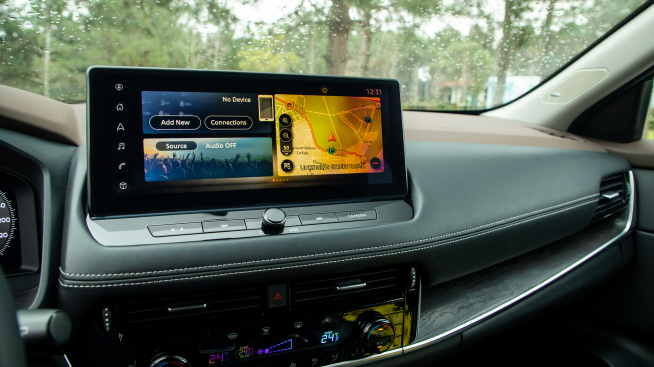Car window stickers, explained

When shopping for a new car, you may have noticed that, along with the price tag, there’s a large car window sticker on most (if not all) of the vehicles on the lot. This sticker can actually tell prospective buyers quite a bit, so let’s learn a little more about what it can tell you about your upcoming purchase.
What is a car window sticker?
Car window stickers are legally mandated to be present in every new car for sale in the United States. They’re formally known as Monroney labels, after the senator who championed them as a way to make the car buying process more transparent for consumers. While most people typically only notice the giant price tag on a car, paying attention to Monroney labels can be quite helpful. They provide a quick way for you to answer some of your own questions about the car.
How to read a new car window sticker
While the exact layout of these stickers can vary from one manufacturer to another, here’s a quick rundown on how to read a new car window sticker:
Model information
Generally located somewhere near the top of the label will be information about the make and model of the vehicle. It’ll also usually include information about the car’s exterior and interior colors, trim levels, engine details and drivetrain layout.
Warranty information
Monroney labels must disclose warranty information. This includes details about your manufacturer's warranties (like the powertrain warranty, for instance). If there are any roadside assistance or maintenance packages included by the manufacturer, they'll be listed here as well.
Equipment and options
There are sections of the Monroney label that list the equipment offered on that specific vehicle. This includes equipment that’s already installed such as safety alarms, airbags and more. It also includes a list of optional equipment you can choose to add on like performance parts, upgraded wheels or specialty services. Knowing about equipment and options upfront can help you make more direct comparisons between different cars on the lot.
Pricing
This section provides relevant details that affected the price of the car. This includes things like transportation costs for bringing the vehicle to the dealer and the price of any optional equipment. It may additionally provide a Manufacturer’s Suggested Retail Price (MSRP), but this may also exist as its own designated section.
Bear in mind that the MSRP is merely the manufacturer’s suggestion. Dealerships may charge more or less than that price at their own discretion. Despite that, knowing the MSRP is still helpful as it can serve as a reference point during negotiations.
Fuel economy
The fuel economy section, sometimes called the EPA label, provides an estimate of the car’s fuel efficiency and emissions ratings. Fuel efficiency is typically provided in miles per gallon for highway and city driving, plus a “combined mileage” figure. This information can serve as a helpful way to compare different cars on the lot. If you’re trying to go green, it can also help you find cars with better efficiency and lower emissions.
Safety ratings
The National Highway Traffic Safety Administration (NHTSA) conducts annual safety testing on new cars. Cars receive star ratings based on the results, with five stars indicating top marks. Sometimes, the car window sticker may have additional ratings by the Insurance Institute for Highway Safety (IIHS).
Note that the NHTSA doesn’t test every car on the market, so there may be times where the safety section is left blank. In this case, you may still be able to look the car up on the IIHS database.
Other types of car window stickers
On occasion, there may be car window stickers that aren’t Monroney labels but look similar. There are two main types of alternate labels you may see:
Supplemental labels
As the name suggests, these stickers contain supplemental information that’s typically specific to the dealership, like additional fees or dealer-supplied accessories that are on the car already.
Buyer’s Guide stickers
While the Monroney label is only mandatory for new cars, most pre-owned vehicles have their own version: the Buyer’s Guide sticker. This is similar to the Monroney label but also focuses more on warranty details, like what's covered and how much the dealership pays for repairs.
In summary
When you’re car shopping, information is your best friend. Car window stickers like Monroney labels help prospective buyers get a lot of crucial information about a car in a single glance. They also let buyers evaluate different cars along the same criteria, for a more apples-to-apples comparison.



